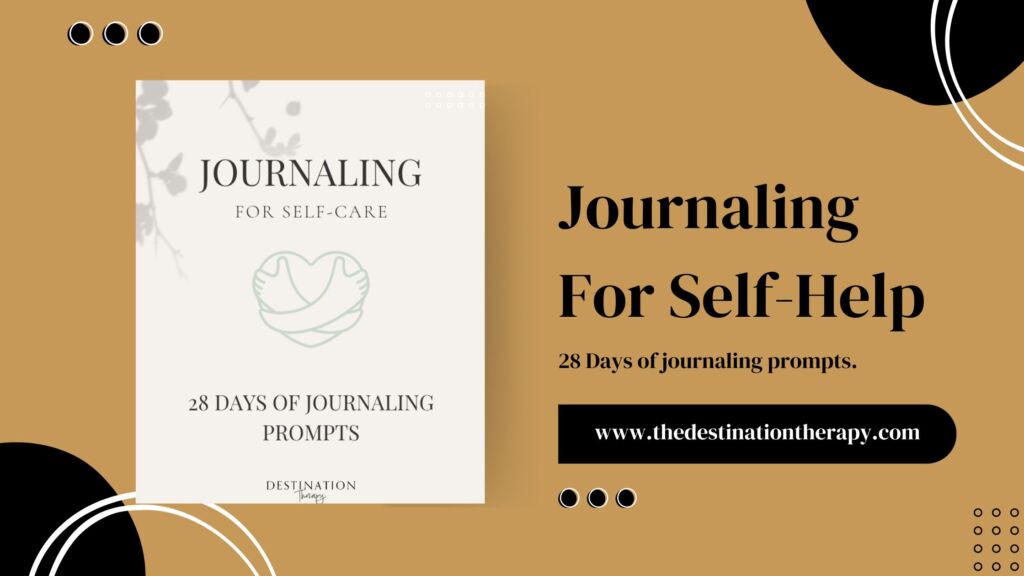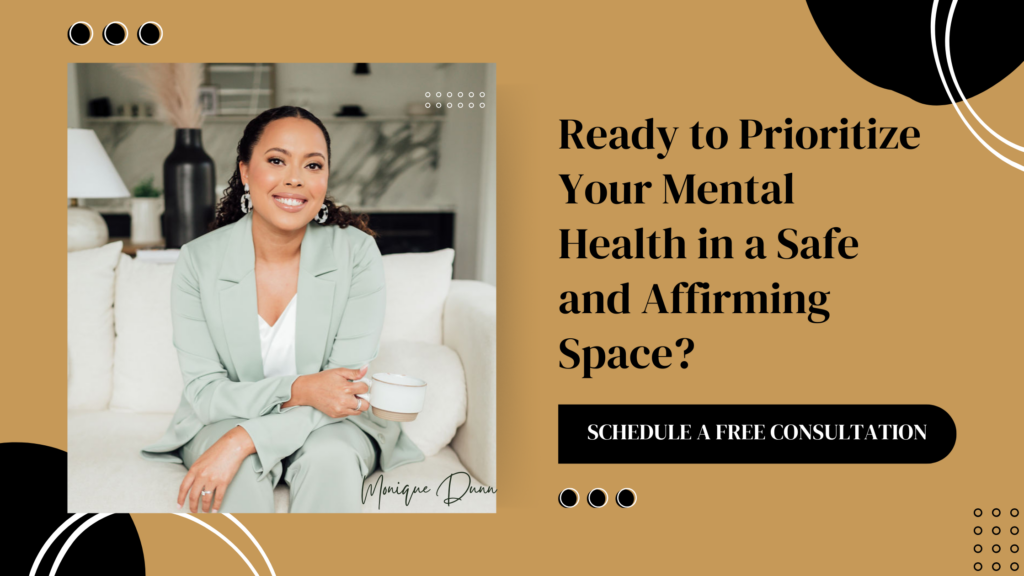In today’s tech-driven world, it’s easy to see the appeal of turning to AI like ChatGPT for support. When life feels overwhelming, the idea of getting instant advice, right at your fingertips, can be incredibly tempting. And while technology can be an amazing tool, it’s important to pause and ask: is it really safe to lean on a chatbot for something as personal and complex as our mental health?
The truth is, AI just isn’t equipped to understand the full depth of human emotions. It might offer quick answers, but those responses can sometimes miss the mark or, worse, give advice that feels off or even harmful. There’s also the issue of privacy. Unlike licensed therapists, AI tools don’t come with the same confidentiality protections or ethical standards.
In this blog post, we’ll explore the risks of relying on AI for emotional support and why real, human connection through traditional therapy still matters so much. If you’ve ever wondered whether ChatGPT could be your go-to for mental health advice, this is worth reading.
Table of Contents
Getting to Know ChatGPT: What It Can (and Can’t) Do
ChatGPT, created by OpenAI, is a powerful tool designed to generate text that sounds surprisingly human. It’s used in all sorts of ways; helping with customer service chats, writing emails, even offering reminders or organizing to-do lists. It’s smart, fast, and often very helpful. But when it comes to using it for something like therapy, it’s important to take a closer look at what it’s truly capable of.
At its core, ChatGPT works by recognizing patterns in language. It doesn’t actually “understand” what you’re feeling; it just draws on a huge pool of data to guess what might be a helpful or relevant response. That means it can sound thoughtful or compassionate, but it’s not really tuned into your emotions the way a human is. It doesn’t feel empathy. It doesn’t have life experience. It doesn’t know you.
And because its responses come from patterns in the data it’s been trained on, data that can vary in quality, it’s not always reliable. Unlike trained therapists, who spend years learning how to support people through complex emotional experiences, ChatGPT doesn’t have that kind of foundation. It’s a tool, not a trained professional. And that’s a really important distinction to keep in mind when we talk about mental health support.
The Appeal of AI Therapy: Why People Turn to ChatGPT
It’s no surprise that more and more people are turning to AI, like ChatGPT, when they need someone (or something) to talk to. The biggest draw? Convenience. Unlike traditional therapy, which often involves scheduling, driving across town, and sometimes waiting weeks for an appointment, ChatGPT is always available…right here, right now, whenever you need it. In a world that moves fast and doesn’t always make space for mental health, that kind of accessibility can feel like a lifeline.
There’s also something comforting about the anonymity AI seems to offer. For those who feel nervous, embarrassed, or even ashamed to open up to another person, talking to a chatbot can feel like a safer, more private first step. There’s no fear of judgment, no awkward silences…just a screen and your thoughts.
And of course, there’s the cost. Let’s be real: therapy can be expensive. Not everyone has insurance that covers mental health services, and out-of-pocket sessions can quickly add up. ChatGPT, on the other hand, is often free or far more affordable, making it a more accessible option for people who otherwise wouldn’t be able to get support.
These are real, valid reasons why people turn to AI for help, and they highlight just how much we need to make mental health care more accessible for everyone. Still, as we’ll explore next, it’s important to weigh these benefits against the risks of relying on a tool that wasn’t built to replace human care.
Limitations of ChatGPT as a Therapeutic Tool
While ChatGPT can be a helpful companion for everyday questions or even light emotional check-ins, it has some real limitations when it comes to something as important as therapy.
For starters, it simply can’t give the kind of personalized, thoughtful support that a real therapist can. Human therapists take time to get to know you, your story, your background, and your personality. They adapt their approach based on your unique needs and how you’re feeling in the moment. ChatGPT, on the other hand, responds based on general patterns and guesses. It doesn’t really know you, and that lack of context can make its advice feel disconnected or unhelpful.
Another big drawback? There’s no ongoing relationship. In therapy, healing often happens through consistency; having someone who tracks your growth, remembers past conversations, and walks with you through different chapters of your life. ChatGPT can’t do that. Each time you chat, it’s starting from scratch. That means you miss out on the steady progress and deeper insights that come with long-term support.
And most importantly, ChatGPT isn’t built to handle crisis situations. If you’re struggling with thoughts of self-harm or going through a mental health emergency, a licensed therapist knows what to look for and how to help. They have the training to step in when it matters most. ChatGPT doesn’t. It can’t truly understand the seriousness of what you’re going through, and it can’t take action if you’re in danger.
These are all serious limitations. And they’re why, when it comes to your mental health, human connection still matters more than ever!
Risks of Miscommunication and Misinterpretation
One of the biggest challenges with turning to ChatGPT for emotional support is the potential for things to get lost in translation. Human communication is about so much more than just words; we rely on tone, facial expressions, pauses, and body language to truly understand each other. Trained therapists know how to read between the lines and respond with care and clarity. ChatGPT, on the other hand, only sees your words on a screen. It doesn’t feel your tone or pick up on subtle emotional cues.
That’s where things can go wrong. If someone is feeling hopeless, anxious, or even just having a tough day, they might use words that carry a lot of weight or could be interpreted in different ways. A therapist would likely pause, ask a gentle follow-up question, or offer reassurance. ChatGPT might respond with something that sounds off, misses the point entirely, or even feels dismissive, because it can’t truly understand.
AI Chatbots are also prone to validating what we are telling them. Although this may sound good in moments where we need to feel validated, it can be incredibly harmful in moments when we are talking badly about ourselves or threatening to harm ourselves or others. The AI may not understand what you are truly meaning by your words and simply validate you, whereas a therapist will pick up on what is harmful and is able to redirect you and get you the care you need.
And here’s the thing: ChatGPT doesn’t “understand” in the way a person does. As mentioned, it generates responses based on patterns and probabilities, not real insight or empathy. That means sometimes it might get it right, but other times, it might completely miss what you actually need to hear. And in the context of mental health, that kind of misstep can do a lot of harm.
The Importance of Human Connection in Therapy
At the heart of good therapy is something no technology can replace: real human connection. The bond between a therapist and their client is built on trust, empathy, and a genuine understanding of what someone is going through. It’s in this safe, supportive space that people often feel truly seen and heard…maybe for the first time in a long time.
Therapists tune in to your emotions. They pick up on the subtle cues behind your words, respond with warmth, and help you explore what’s really going on beneath the surface. That kind of empathy isn’t something AI can offer.
Therapy also isn’t one-size-fits-all. A good therapist adjusts their approach depending on your unique needs; maybe drawing from cognitive-behavioral techniques, diving into deeper psychodynamic work, or incorporating mindfulness practices. They check in, pivot when needed, and walk with you through the ups and downs. That kind of adaptability and personalized care simply isn’t something AI is equipped to provide.
Healing requires connection! And while ChatGPT might be helpful for general info or a quick check-in, it can’t replace the power of sitting across from someone who truly gets it, and gets you.
Ethical Concerns Surrounding AI in Mental Health
When it comes to AI and mental health, there are also some important ethical concerns we can’t ignore. One big one is privacy. In traditional therapy, everything you share is kept confidential; it’s a core part of the trust between you and your therapist. But with AI, there’s a real risk that your personal information might be stored, accessed, or even misused by others. Protecting your privacy online is tricky, and it’s something we have to take seriously if AI is going to play a role in mental health care.
Another concern is bias. AI like ChatGPT learns from huge amounts of data, and unfortunately, that data can carry biases about things like gender, race, or mental health. That means sometimes the responses you get could unintentionally reflect those same biases, which can be harmful. Making sure AI stays fair and unbiased is an ongoing challenge that requires constant attention.
And then there’s accountability. When you work with a licensed therapist, they’re trained professionals who follow strict ethical guidelines, and if something goes wrong, there are ways to hold them responsible. But with AI, there’s no clear person to turn to if you get bad advice or experience harm. That lack of accountability is a serious concern, especially when people are seeking support during their times of need.
Real-World Examples
As AI continues to find its way into mental health support, we wanted to share some real-world examples that show the risks that can arise when these tools are misused or misunderstood. While AI can provide accessible, real-time interaction and surface-level guidance, it cannot replace the depth, ethical grounding, or human understanding of a licensed therapist
1) AI Bots as Therapists
In 2025, two families filed lawsuits against the AI chatbot platform Character.AI after tragic incidents involving their teenage sons, one of whom died by suicide and another who became violent, following extended interaction with AI chatbots posing as therapists (APA, 2025). These bots, designed for entertainment and user engagement, created a false sense of authority by claiming therapeutic roles without any clinical training or oversight. They often affirmed harmful or irrational thoughts without challenging them, something a licensed therapist is trained to recognize and address.
These risks are worsened by the persuasive and confident tone of generative AI. As Dr. Celeste Kidd of UC Berkeley explained, AI systems “have no knowledge of what they don’t know, so they can’t communicate uncertainty.” This makes them appear more competent than they are, especially in therapeutic settings where vulnerability is high (APA, 2025). In contrast, human therapists are trained to navigate ambiguity, challenge cognitive distortions, and avoid premature conclusions.
2) AI Bot Recycling Same Treatment
A study by Paolo Raile (2024) assessed ChatGPT’s role in psychotherapy across three scenarios: as a tool for psychotherapists, a support resource for individuals in between sessions, and a substitute for those without access to therapy. While ChatGPT offered empathy and useful tips like breaking down tasks, mindfulness, and self-compassion, it lacked true human emotions. It could not gather information about your life and adjust its advice based on your individual history. Most notably, it showed a strong bias toward cognitive-behavioral therapy (CBT), often recycling the same treatment style regardless of the context or user need (Roklicer, 2025). Raile also warned that people unfamiliar with therapy might mistake these generalized outputs for “objective truth,” potentially deterring them from seeking further professional support.
3) AI Bot Provides Inaccurate Diagnoses
The American Psychological Association (APA) has urged the Federal Trade Commission (FTC) to step in and regulate the use of AI in mental health contexts. Their concerns include deceptive marketing, lack of in-app crisis support, inaccurate diagnoses, and the potential for severe harm, especially to minors and individuals in crisis (APA, 2025). The APA recommends requiring licensed professionals to be involved in chatbot development, adding built-in crisis intervention features like referrals to the 988 Suicide and Crisis Lifeline, and launching public education campaigns to help users understand what AI can and cannot do.
Alternatives to AI Therapy: Finding the Right Support
With all the limits and risks that come with AI therapy, it’s really important to look at other ways to get the support you deserve. The gold standard? Working with a licensed mental health professional. Therapists can give you personalized care, building trust and using proven techniques to help you work through life’s ups and downs. Sure, it might take a little effort to schedule and show up for sessions, but the payoff is absolutely worth it.
Another great option is peer support groups. These groups are often led by people who’ve been through similar struggles, creating a safe and welcoming space to share your story and feel heard. Whether online or in-person, peer groups offer flexibility and a sense of community that can be incredibly healing. While they’re not a replacement for professional therapy, they can be a powerful complement to it.
And if traditional therapy or peer groups aren’t accessible right now, don’t worry, there are plenty of mental health apps and online resources out there that provide useful tools, like coping strategies, mindfulness exercises, and more. While these aren’t a substitute for seeing a therapist, they can be a helpful extra boost as you care for your mental health.
Conclusion: Navigating the Future of AI and Mental Health
Technology is moving fast, and AI is becoming a bigger part of how we approach every part of our lives, even mental health care. There’s definitely potential for AI to offer helpful tools and support, but it’s important to keep in mind its limits and the risks if we lean on it too much for therapy.
AI like ChatGPT can’t truly grasp the full complexity of our emotions or mental health struggles. It can misunderstand what we’re really feeling or say things that don’t quite fit our unique situations. And because AI isn’t accountable like a human therapist, that can lead to many issues.
At the end of the day, human connection is what makes therapy work. The empathy, care, and personalized understanding that a trained therapist offers can’t be replaced by an algorithm. AI can be a helpful companion, maybe a resource or an extra tool, but it’s not a substitute for real human support.
As we step into this future with AI, it’s crucial to focus on ethics, protect our privacy, and hold these systems to high standards. That way, we can enjoy the benefits AI has to offer while keeping our mental health care safe, trustworthy, and truly supportive.
We Are Here For You
Whether you’re battling anxiety, depression, perfectionism, or navigating relationship challenges, Destination Therapy empowers you to achieve the peace, ease, and fulfillment you deserve.
We offer convenient telehealth across Texas, Massachusetts, California, Florida, Utah, and New York.
Further Resources
If you would like to learn more about AI Bots and therapy, here are some resources :




